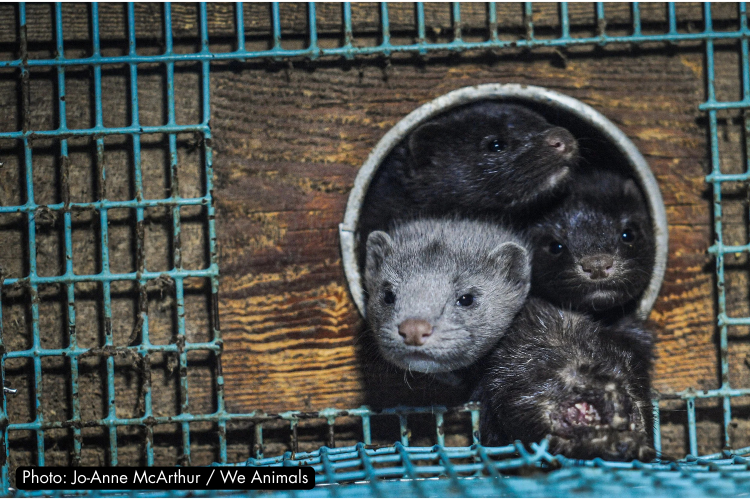Drone footage shows rescued elephant Pupy thriving in new sanctuary home
The 35-year-old African elephant spent decades in a Buenos Aires zoo before being relocated to Latin America’s first elephant sanctuary.
Credit: GSE
Pupy the rescued elephant has been roaming freely and foraging in her new sanctuary home, as seen in new drone footage released by Global Sanctuary for Elephants (GSE).
The 35-year-old African elephant arrived at the sanctuary in Mato Grosso, Brazil, on April 18, 2025 following a 2,700-kilometer journey from a city zoo in Argentina’s capital. She had lived in the facility for 30 years after being taken from South Africa’s Kruger National Park back in 1993.
Buenos Aires Zoo in Argentina faced increased criticism over its ability to give animals a natural life following the death of a polar bear named Winner who died in late December 2012 during a heat wave. This led to a wider shift in public opinion against the keeping of animals for human entertainment in the city.
This change in attitude towards animal captivity led to the closure of the zoo in 2016, which was then renovated and reinvented as the Buenos Aires Eco-park.
The eco park, now with a new rescue centre for injured wild animals and a conservation focus, spent over seven years moving more than 1,000 of the former zoo’s animals to sanctuaries around the world.
But, due to Pupy’s age and the logistics of moving an elephant, she remained as one of the few “legacy animals” still kept at the eco park - until now.
Pupy was transported in a large iron crate strapped to a truck and supported by caretakers and elephant veterinarians during the five-day land journey to Elephant Sanctuary Brazil, the first refuge for elephants in Latin America located in the municipality of Chapada dos Guimarães in Mato Grosso state.
It took months to prepare Pupy for the journey, which involved hours and hours of confinement, but thankfully she made the journey “flawlessly”, according to María José Catanzariti, a veterinarian and operational manager at the Buenos Aires preserve. “Sometimes in the first 24 hours these animals don’t want to eat, but Pupy keeps eating,” she said at the time of the relocation.
Although initially unsure when she arrived at the sanctuary - Pupy was reluctant to leave the iron crate - it appears she has settled in now and is enjoying the freedom and care of her new home, as new drone footage, released by GSE, shows her exploring the environment.
“It’s both exciting and amusing to witness Pupy making her way through Yard 1,” wrote GSE. “Initially, you can only see trees shaking and have to assume an elephant is the cause of the disturbance. Once the camera zooms in, it becomes apparent that Pupy is thrashing trees around and making herself right at home. And this is just one section of the three yards she has access to.”
The organization has been sharing heartwarming clips of Pupy with supporters via their blog as the African elephant adapts to the sanctuary, from crushing watermelons, her favorite fruit according to caretakers, with her trunk to tree scratching and mud wallowing.
“The sun is getting hot here in Mato Grosso and we’ve seen Pupy spending more and more time at the mud wallow,” wrote GSE. “She is a little bit of an itchy girl, which makes sense because she has a good bit of dead skin all over her body. With every tree she scratches herself on or each bit of mud she covers herself with, her skin loses some of those tough layers and begins to renew itself.”
The Brazilian sanctuary offers rescued elephants space to rediscover natural behaviors and form bonds after years of isolation. The current female African habitat at the sanctuary covers about 13 acres, but efforts are currently underway to expand that space by another 80 acres, according to GSE. Pupy is initially settling in alone but is expected to be joined by Kenya, another African elephant from a Mendoza zoo, once she completes relocation training.
Over the past decade, Tomas Sciolla and his team have relocated hundreds of animals to sanctuaries, giving them the lives they deserve and the closest thing to freedom they could ever have after lifetimes in captivity. Listen to this podcast episode with Tomas about Pupy’s rescue here.
Getting elephants through the sanctuary gates is an enormous first step, but this is when the real work starts. You can help support Pupy recover from a lifetime of confinement here.
We Have A Favor To Ask…
Species Unite amplifies well-researched solutions to some of the most abusive animal industries operating today.
At this crucial moment, with worldwide momentum for change building, it’s vital we share these animal-free solutions with the world - and we need your help.
We’re a nonprofit, and so to keep sharing these solutions, we’re relying on you - with your support, we can continue our essential work in growing a powerful community of animal advocates this year.




